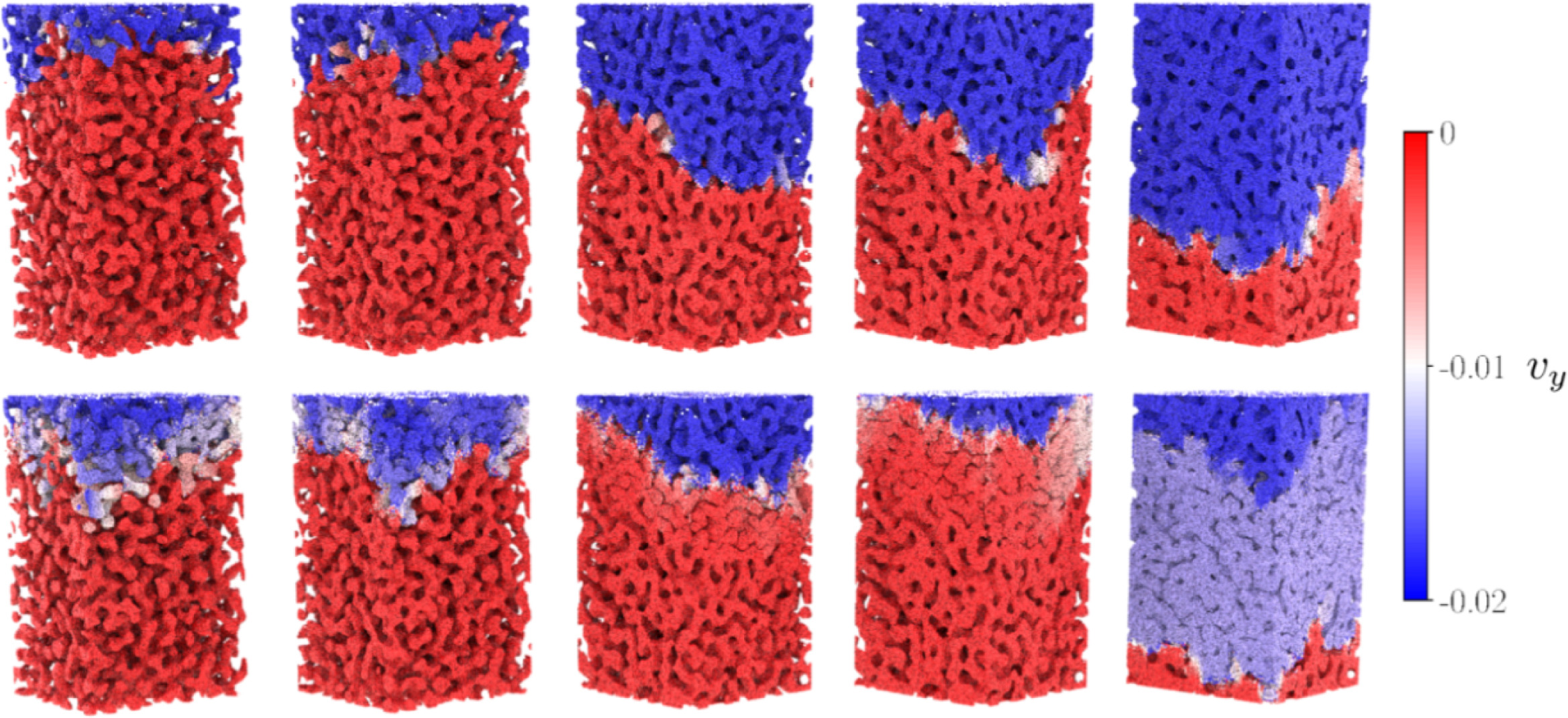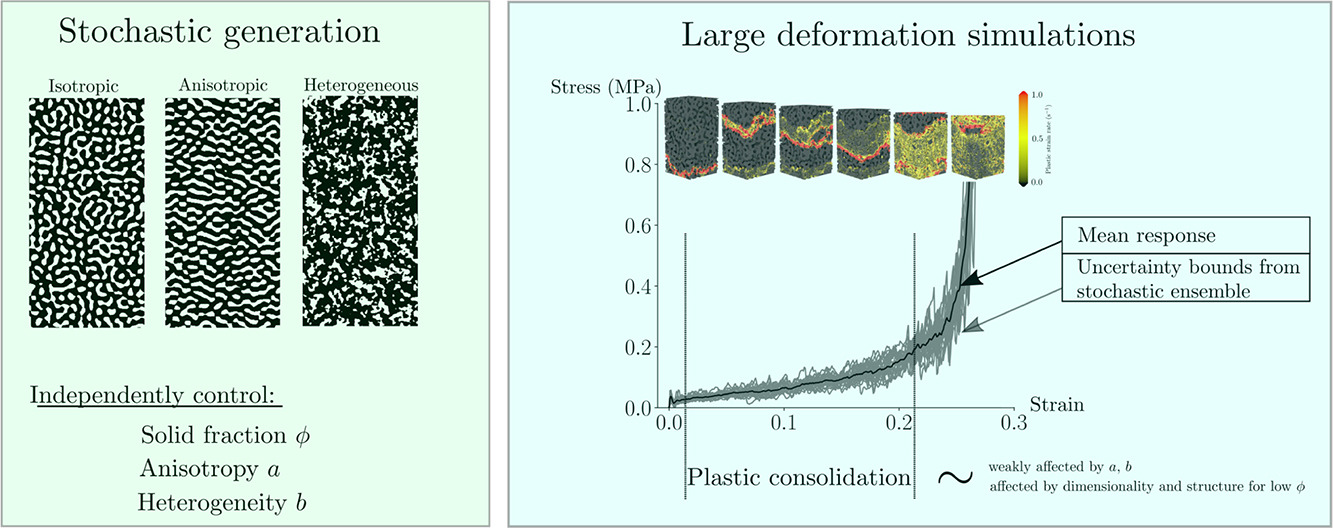Modeling the deformation and failure of porous brittle solids
Applications to snow microstructure failure
Compaction patterns
Porous rocks, foams, cereals, and snow display a diverse set of common compaction patterns, including propagating or stationary bands. Although this commonality across distinct media has been widely noted, the patterns’ origin remains debated—current models employ empirical laws for material-specific processes. Here, using a generic model of inelastic structured porous geometries, we show that the previously observed patterns can be attributed to a universal process of pore collapse. Furthermore, the pattern diversity can be mapped in a phase space of only two dimensionless numbers describing material strength and loading rate.

References:
Blatny, L., Berclaz, P., Guillard, F., Einav, I., & Gaume, J. (2022). Microstructural origin of propagating compaction patterns in porous media. Physical Review Letters, 128(22), 228002.
Elasticity, failure and plastic consolidation
Porous brittle solids such as snow evidence complex mechanical behavior, where localized failure patterns originate from mechanical processes on the microstructural level. In order to investigate the failure mechanics of porous brittle solids, we develop a numerical microstructure-based approach and conduct numerical simulations using the Material Point Method. This allows investigating both small and large deformation characteristics of irregular porous media where a segmentation into grains and bonds is ambiguous. We demonstrate the versatility of our approach by examining elasticity, failure and plastic consolidation as a function of a wide range of porosities, from 20% to 80%. Observing that onset of failure can be well described through the second order work, we show that the stress at failure follows a power law similar to that of the elastic modulus. Moreover, we propose that the failure envelope can be approximated by a simple quadratic fitting curve, and that plastic deformation appears to be governed by an associative plastic flow rule. Furthermore, large deformation simulations reveal a transition in the mode of localization of the deformation, from compaction bands for highly porous samples to shear bands for denser ones.Finally, this study has revealed that the plastic consolidation of such structures can be described by a universal function and plasticity index similar to that proposed for systems of discrete cohesive disks.


References:
Blatny, L., Löwe, H., Wang, S., & Gaume, J. (2021). Computational micromechanics of porous brittle solids. Computers and Geotechnics, 140, 104284.
Blatny, L., Löwe, H., & Gaume, J. (2023). Microstructural controls on the plastic consolidation of porous brittle solids. Acta Materialia, 250, 118861.